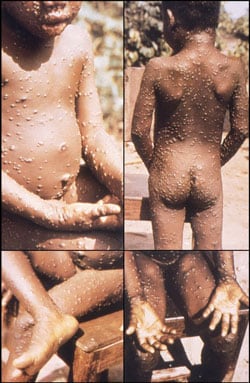Archive for April, 2018
Central American collective migration has become something of an annual event around Easter week
Thursday, April 5th, 2018“……The migrants, most of them Hondurans, left the southern Mexican border city of Tapachula on March 25 and for days traveled north en masse — by foot, hitchhiking and on the tops of trains — as they fled violence and poverty in their homelands and sought a better life elsewhere.….”
The Fire Brigades Union is demanding more money for its members before it agrees they should be called upon to rescue casualties from the scene of a massacre.
Thursday, April 5th, 2018Militant union blocks plan to put firemen on terror front line after fierce criticism in Manchester atrocity inquiry
- The Fire Brigades Union is now demanding more money for its members
- Fire brigades now rely on volunteers and senior officers to man specialist teams
- Comes after last week’s critical report into the Manchester Arena atrocity
A militant trade union has been accused of blocking Government plans for more firefighters to respond to terrorist attacks.
The Fire Brigades Union is demanding more money for its members before it agrees they should be called upon to rescue casualties from the scene of a massacre.
Deadlock in the long-running dispute means fire brigades are having to rely on volunteers and senior officers to man the specialist teams that are on standby to tackle Marauding Terrorist Firearms Attacks (MTFA).
It comes after last week’s critical report into the Manchester Arena atrocity found that ‘risk-averse’ chiefs kept specialist fire crews away from the scene for two hours. Last night a Whitehall source said the FBU was ‘dragging its feet’ on the vital issue, adding: ‘It’s disappointing they have chosen to use this as a bargaining tool.’
And a new briefing by the National Fire Chiefs Council admitted: ‘The overall operating environment in terms of the national FBU position on the undertaking of the MTFA role continues to provide a challenge to a small number of fire and rescue services.’
The Fire Brigades Union is demanding more money for its members before it agrees they should be called upon to rescue casualties from the scene of a massacre. Pictured: The FBU’s Andy Dark
Fire brigades were first asked to set up specialist teams to help respond to terror attacks in 2011 and there are currently 15 around England. They are on call round the clock and equipped with stretchers so they can carry the injured out of the ‘warm zone’ where a terror attack has taken place and into safety, where paramedics can treat them.
But because there has been no agreement with the FBU to make it a contractual requirement, all those who take part are volunteers and in some brigades only senior officers or non-union members are on the teams.
Last year, the FBU advised its members there was ‘no obligation’ for them to take part in any training exercises for terror attack response.
Assistant General Secretary Andy Dark has said it is only fair for the Home Office to provide more money when firefighters were being asked to do work which is more skilled and more dangerous, insisting: ‘We haven’t used it as a bargaining chip.’
Lord Harris of Haringey, who investigated London’s preparedness for a terror attack, urged the Home Office and the FBU to resolve the issue.
The Home Office said: ‘The Government is clear that responding to this type of attack falls within the duty of firefighters. This position has been strongly supported by fire and rescue services which have an MTFA capability and the National Fire Chiefs Council.’

Police and other emergency services are seen near the Manchester Arena after reports of an explosion
The Nigerian Centre for Disease Control reported 6 new confirmed cases of Lassa fever last week, including two deaths. One of those deaths involved a doctor who was in close contact with at least 30 patients.
Thursday, April 5th, 2018In the reporting Week 13 (March 26- April 01, 2018) six new confirmed cases were recorded from five States…..with two new deaths in confirmed cases from FCT (1) and Abia (1)
From 1st January to 1st April 2018, a total of 1706 suspectedi cases have been reported. Of these, 400 were confirmed positive, 9 are probable, 1273 are negative (not a case) and 24 are awaiting laboratory results (pending) Since the onset of the 2018 outbreak, there have been 142 deaths: 97 in positive-confirmed cases, 9 in probable cases and 36 in negative cases.
Case Fatality Rate in confirmed cases is 24.3% –
In the reporting week 14, two new healthcare workers were affected with one death. Twenty five* health care workers have been affected since the onset of the outbreak in eight states –
30 cases are currently under treatment in treatment centres across nine states -Edo (9), Ebonyi (6), Bauchi (7), Ondo (5), Plateau (1), Osun (1) and Kogi (1)
A total of 4274 contacts have been identified from 20 states. Of these 662 (15.0%) are currently being followed up, 3605 (84.8%) have completed 21 days follow up while 7(0.2%) were lost follow up. 27 (40%) of the 67 contacts have tested positive from five states (Edo-12, Ondo-7, Ebonyi-3, Kogi -3 and Bauchi-1) WHO and NCDC has scaled up response at National and State levels National RRT team (NCDC staff and NFELTP residents) batch C continues response support in Ebonyi, Ondo, Edo, Bauchi and Taraba State
National Lassa fever multi-partner multi-agency Emergency Operations Centre (EOC) continues to coordinate the response activities at all levels
Central African Republic (CAR): 8 cases of monkeypox
Wednesday, April 4th, 2018Signs and Symptoms
In humans, the symptoms of monkeypox are similar to but milder than the symptoms of smallpox. Monkeypox begins with fever, headache, muscle aches, and exhaustion. The main difference between symptoms of smallpox and monkeypox is that monkeypox causes lymph nodes to swell (lymphadenopathy) while smallpox does not. The incubation period (time from infection to symptoms) for monkeypox is usually 7−14 days but can range from 5−21 days.

The illness begins with:
- Fever
- Headache
- Muscle aches
- Backache
- Swollen lymph nodes
- Chills
- Exhaustion
Within 1 to 3 days (sometimes longer) after the appearance of fever, the patient develops a rash, often beginning on the face then spreading to other parts of the body.
Lesions progress through the following stages before falling off:
- Macules
- Papules
- Vesicles
- Pustules
- Scabs
The illness typically lasts for 2−4 weeks. In Africa, monkeypox has been shown to cause death in as many as 1 in 10 persons who contract the disease.
Duisberg: local trains crash into each other and injure 23 p
Wednesday, April 4th, 2018Rabies Deaths Among Pregnant and Breastfeeding Women — Vietnam
Wednesday, April 4th, 2018Nguyen HT, Tran CH, Dang AD, et al. Rabies Vaccine Hesitancy and Deaths Among Pregnant and Breastfeeding Women — Vietnam, 2015–2016. MMWR Morb Mortal Wkly Rep 2018;67:250–252. DOI: http://dx.doi.org/10.15585/mmwr.mm6708a4.
“…..Despite widespread availability of PEP in Vietnam, in 2015 the Ministry of Health (MoH) received reports of pregnant and breastfeeding women with clinically diagnosed rabies. MoH investigated factors associated with these rabies cases. MoH found that, during 2015–2016, among 169 cases reported in Vietnam, two probable cases of rabies were reported in breastfeeding mothers and four in pregnant women, all of whom had been bitten by dogs. All six patients died. Three of the four pregnant women had cesarean deliveries. One of the three newborns died from complications believed to be unrelated to rabies; the fourth pregnant woman contracted rabies too early in pregnancy for the fetus to be viable. Two of the patients sought care from a medical provider or traditional healer; however, none sought PEP after being bitten. In each case, families reported the patient’s fear of risk to the fetus or breastfed child as the primary barrier to receiving PEP. These findings highlight the need for public health messaging about the safety and effectiveness of PEP in preventing rabies among all persons with exposures, including pregnant and breastfeeding women.……”
* Family reported that the dog appeared normal at the time of exposure. No information was available regarding the status of the dog after 10 days.
† Patients could have multiple symptoms.
Alkhurma hemorrhagic fever (AHF)
Wednesday, April 4th, 2018“…..Internist Dr. Sami Barood, former director general of health in Jeddah, said Alkhurma was first discovered among six patients in 1994. It is named after Alkhurma, a kind of sheep found in a township of the same name close to Taif.
Later 11 cases have been discovered in Khumra, south Jedd…… There were new outbreaks of the hemorrhagic fever in 1999 and 2001 and 20 new cases were reported between 2001 and 2003.
Barood said domesticated animals such as cats and rabbits are likely carriers and transmitters of Alkhurma virus from animals to humans. “There is no scientific proof confirming the disease being transmitted through mosquitoes,” he said.
People who drink fresh milk of cow, sheep and camel without boiling may contract the disease……”
A woman opened fire at the YouTube headquarters in San Bruno, Calif., wounding four before committing suicide.
Tuesday, April 3rd, 20184/2/1979: The world’s first anthrax epidemic begins in Sverdlosk, Russia eventually killing 62 and incapacitating another 32
Monday, April 2nd, 2018“…..workers at the Ekaterinburg weapons plant failed to replace a crucial filter, causing a release of anthrax spores into the outside air. The wind carried the spores to a farming area and infected people and livestock in the area….”
A family on their return to Puerto Rico
Monday, April 2nd, 2018“….It is too early to determine how many may return, but there is little doubt that Puerto Ricans have begun trickling back to the island.
For many, it is a joyous return to the motherland after months in exile. But the homecoming is still bittersweet. Those returning must come to terms with an island that is still crippled, where power outages are frequent, businesses remain shuttered and hillsides are pocked with blue roof tarps.
Older people like Enrique and Emma are especially vulnerable to this instability…..”

